#Le Flamenco
Text



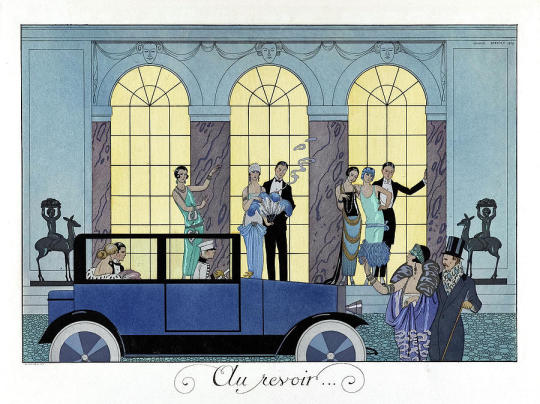

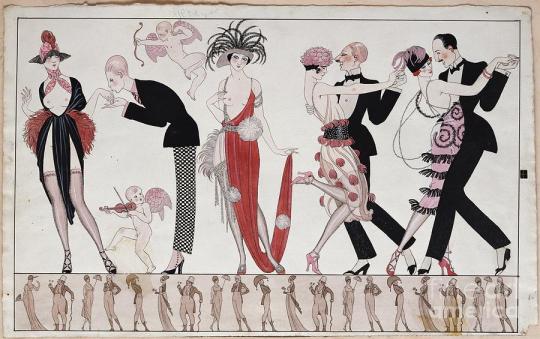
Illustrating Fashion in 1920s Paris: The Work of Georges Barbier
The flamboyant and fashionable Georges Barbier is most noted for his wonderful Art Deco illustrations of the fashions of the 1920s.
Shown Above:
1.) "Warrior"
2.) "Les Marionnettes"
3.) "Evening"
4.) "Farewell"
5.) "Incantation"
6.) "The Tango"
Barbier created a new fusion between fashion and art illustration with his beautiful pictures depicting willowy women in fashionable dresses, and his pictures became important depictions of fashion and life in the 1920s.
Born in 1882, Barbier lived in Paris from 1908 and nourished his love of classical antiquity by exploring the collections in the Louvre. His fascination with the ancient artefacts, especially the figures depicted on Greek vases, greatly influenced his work and depiction of women and the human body.

Above: "Le Flamenco" (Georges Barbier)
In Paris, he put on his first show in 1911. It was a great success and it led to Barbier creating and leading a group with artists from the Ecole des Beaux Arts, which was affectionately nicknamed 'The Knights of the Bracelet' by Vogue. Other members of the Knights of the Bracelet included leading fashion illustrators and artists such as Georges Lepape and Paul Irebe, who were masters in their own right at producing bold fashion illustrations that were unlike any that had been seen before. The bold stylised designs helped create the emerging Art Deco aesthetic, presenting fashion in a new and exciting way.

Above: Isola Bella (Georges Barbier)
The stunning and iconic figures that Barbier depicted epitomised the 1920s fashion ideal and his reputation soon reached across the globe, where he began to produce advertising artwork for brands such as Cartier and Elizabeth Arden. Alongside his artworks, he also produced essays on fashion and designed theatre costumes, jewellery and fans. On his early death at the age of 50 in 1932, he had become one of the most well-known and highly regarded artists of the Art Deco era.
[text via Barneby's UK.]
#Georges Barbier#barbier#art deco#art#1920s#illustration#favorite#Le Flamenco#art history#warrior#tango#fashion#fashion history#isola bella#1920s artist#art deco artist
49 notes
·
View notes
Text
ME CAGO EN LA MADRE QUE LOS PARIÓ
#al menos no se le da mal bailar flamenco a la sofia loren....#no se le da mal=podría ser MUCHO peor#z xarre
1 note
·
View note
Text
Trinidad Jiménez y su "Raíz Sureste"
TERESA FERNANDEZ HERRERA. Periodista, Escritora, Editorialista, Directora Gral. Cultura Flamenca, Prensa Especializada
Tiene mucho de especial la Sala Negra de los Teatros del Canal. La cercanía, la excelente acústica, el camino laberíntico hasta llegar a ella en la quinta planta, la negrura de la entrada, casi un túnel misterioso que desemboca súbitamente en la negrura de la sala levemente…
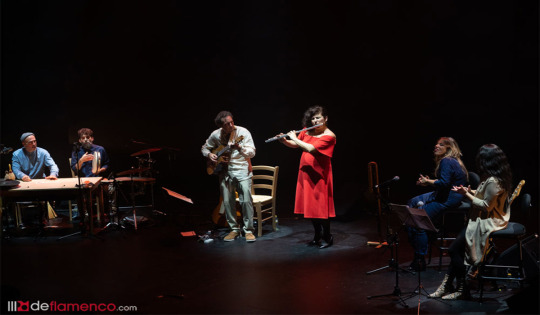
View On WordPress
#ANTONIO BENAMARGO#BORJA BERRUETA#DESIRE PAREDES y PASTORA ANDRADES#DIRECTOR FESTIVAL SUMA FLAMENCA#EPI PACHECO#Jorge Pardo#JULIAN OLIVARES#LA SALA NEGRA DE LOS TEATROS DEL CANAL#lomasleido#lomasvisto#NO HAY INSTRUMENTO QUE SE LE RESITA AL FLAMENCO#RAIZ SURESTE#TRINIDAD JIMENEZ
0 notes
Text
Rentrée et inscriptions à l’école de Flamenco A. Romero
Rentrée et inscriptions à l’école de Flamenco A. Romero
Le spectacle de clôture «Deseo Flamenco» présenté par les élèves de l’école de flamenco A. ROMERO s’est tenu à Alénya début juillet et a obtenu un très large succès auprès du public.Un spectacle en direct, avec un guitariste et un chanteur.Tous les niveaux étaient présents pour offrir aux spectateurs un flamenco authentique et actuel, de grande qualité, sous la direction artistique et…

View On WordPress
#Alexandre Romero#ateliers#cours#école#flamenco#Le Journal Catalan#Pyrénées-Orientales#sévillanes#STAGES
0 notes
Note
holaaa podrías hacer un type of boyfriend de Blas porfii🙏🏼
El Introvertido | Blas Polidori
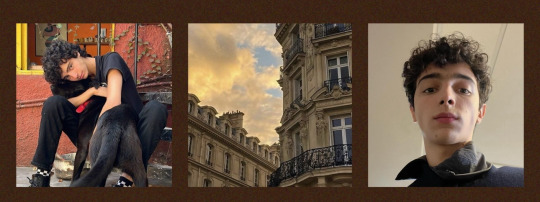
¿Cómo sería salir con Blas?
Corto y Sencillo
Personalidad
- Blas es un amor tierno y humilde que irradia inocencia. Aunque su timidez a veces es extrema, una vez que le tienes confianza, te colma de cariñitos, tanto verbales como no verbales.
- Recostada junto a Blas, disfruta de sus dulces melodías en la guitarra dedicadas a Adela.
- Blas adora explorar la costa, tomándote de la mano para correr sin parar.
- Juntos, Blas y tú exploran París mientras él se dedica a audiciones para una agencia de modelos. Entre risas, le llamas "sexy-cutie" y él se sonroja, añadiendo un toque divertido y juguetón.
- Blas, apasionado por los coffee shops, encuentra siempre un rincón acogedor en las calles de Madrid.
- Blas, re pillo, siempre te trae regalitos al departamento, tirando: "El regalito de hoy: una galletita de jengibre y un cactus chiquitito".
- Compartiendo la pasión por las películas de Tim Burton, tú sabes en tu interior que Blas es prácticamente un personaje salido de Burton.
- Blas, tierno como un peluche, adora abrazarte y llenarte de besitos por todos lados.
Boyfriend Material
- Blas, aficionado a la comodidad, es como un oso perezoso en casa. Disfruta de largas siestas y de momentos relajados. Su ritual de té de manzanilla con limón y jengibre le suma calidez a esos días tranquilos. Amante de la música, desde tropical hasta flamenco y rock argentino, pero especialmente cautivado por los acordes de Daniel Caesar. Aunque se duerme rápido y en silencio, su amor por abrazarte crea un ambiente acogedor y lleno de afecto.
- En las mañanas, Blas despierta con suavidad y te llena de besitos cálidos. Siempre madrugador, prepara café con cariño, inundando el comienzo del día con gestos dulces.
- Cuando Blas sale del trabajo, su estilo destaca como el de un chico vintage street o hip hop con toques únicos. Con prendas de marcas, regalos de su carrera de modelo como Prada, su presencia irradia un aire de moda y autenticidad, mostrando su personalidad distintiva.
- Blas prefiere la tranquilidad de casa, compartiendo momentos contigo. Desde ver películas hasta leer un libro, cantarle a Adela y tocar la guitarra en el sofá o en el balcón.
- Aunque Blas viaja a París por trabajo, siempre se mantiene conectado contigo a través de FaceTime. Sus regalos son detalles encantadores, desde pulseras con la Torre Eiffel hasta piezas únicas como una sortija hecha con cuchara y artesanías, llevando consigo la esencia de cada lugar y compartiendo esos momentos especiales contigo.
Artistas que pegan con Blas
Pescado Rabioso
Nirvana
Daniel Caesar
Gustavo Cerati
Maná
Los Enanitos Verdes
TV Girl
The Marias
Jungle
Radiohead
Deftones
#blas polidori#enzo vogrincic#fanfic#society of the snow#my writing#la sociedad de la nieve#uruguay#latina#spanish#argentina#enzo vogrincic x reader#Blas Polidori fic#agustín pardella
175 notes
·
View notes
Text
IWTV Trailer (me losing my freaking marbles - YOLO) Pt2
I'm just going frame by frame thru AMC'S BEAUTIFUL new IWTV trailer. But I had to split this into 2 parts cuz Tumblr won't let me post 30+ pics. 🙄

They transition from Louis telling Claudia "It's you and me," to BB!Dan being "disrespectful"--yelling at Louis wanting him to make him a vamp, like we heard in S01E01.
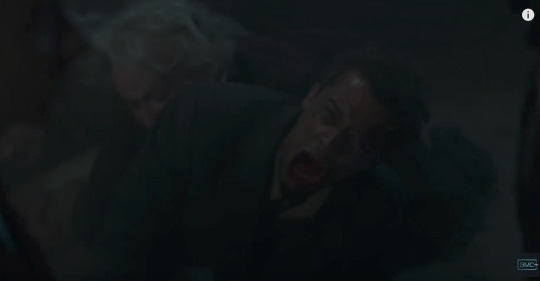
And they immediately cut to the clip we've seen before of Louis crying & being dragged off by some old dude (if that's a vampire I feel bad for him, LOL). This might be Claudia/Madeleine's execution, rather than the Trial itself, cuz Louis was wearing a different outfit. (And Claudia's wearing the YELLOW DRESS! Imma be sick! 😭)
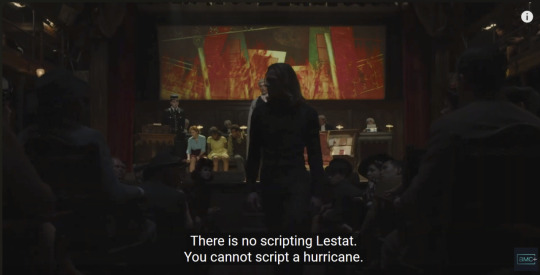
So I wonder when the "best outfit" Jam Reiderson said Claudia wears is gonna take place--which I'm assuming is the red Flamenco dress from the posters.
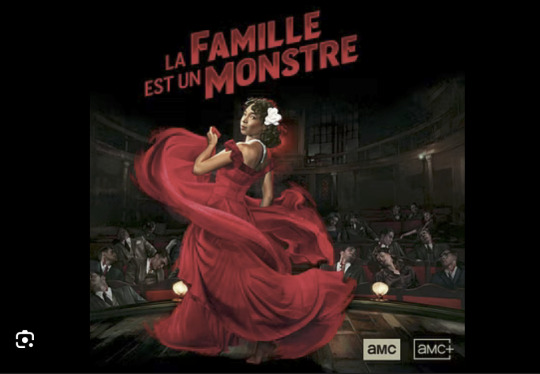
It is SO incredible that we're actually gonna see The Trial, and LESTAT BEING THERE, and seeing Madeleine & Armand & Santiago.
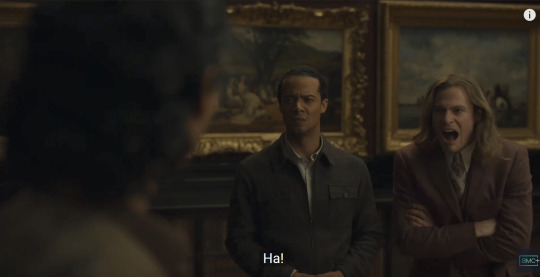
It's interesting that they cut from Armand saying it wasn't SanFran where he failed Louis but Paris, and jump to hallucination!Lestat mocking Armand, yelling "HA!" Is Louis' outfit the same as the one where the old dude dragged him out crying? It kinda looks the same. So is Louis imagining Lestat being FURIOUS with Armand for what's about to happen to Claudia? I wonder why Les is in THAT suit, cuz it looks like the same one he wore in S1E03 the night he kicked Jelly Roll Morton out of town & ragged on Louis about not wanting to kill humans.

Good lord, here we go. #GoneTooSoonMadeleine. U_U And I LIKE THE IMAGERY of the joint/shared transformation, nodding to Claudia desperately wanting Louis to be her (blood) spouse, as they make Madeleine together.

Jfc Louis really did almost kill BB!Daniel. O_O He shattered all that plaster--that's brain damage for sure--no wonder he can't remember the interview, LOL. (I still think Armand used the Mind Gift to make him forget everything.)
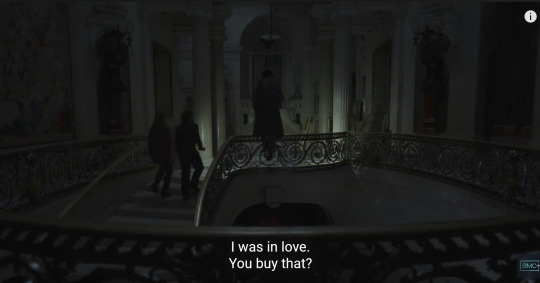
A lot of paintings and canvases--art heist Armand?! Are we finally gonna see how he made all that money, going around stealing priceless treasures!? (You can see Armand's feet floating, LOL.) Or is the inside of that chateau his coven raided, "we own dominion!"?
Daniel asking Louis: "YOU BUY THAT?"
AMC thinks they're FUNNY! Cuz they cut right from Armand stealing art he didn't BUY, to lovebomber!Lestat laughing in the townhouse and Louis yelling in what looks like a train station? So he's freaking TF out in public (just like Paul).

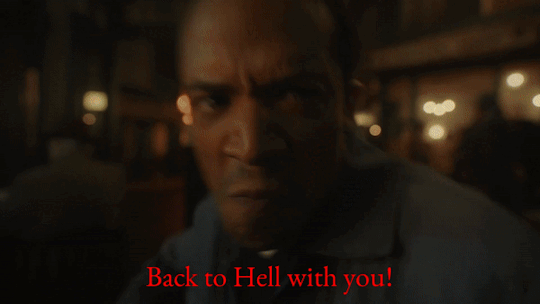
Ooooo--then they have Lelio!WolfKiller!Lestat about to attack someone (Magnus? Nope, I double-checked it's Armand cuz ofc it is), looking like the freaking BEAST in his red cape--

--right before we get Lestat's POV of Louis and him fighting in Ep5.

Cuz yeah, Lestat had snapped, and was beating Louis like he was a DOG, like he wasn't even seeing a PERSON, let alone someone he was supposed to be protecting from vampires/monsters LIKE HIM--and OMFG Louis was in blue just like Belle was during the wolf attack--I hate this show.

And they immediately jump from Louis getting beat by Lestat to what I assume is Louis getting jumped by the Theatre--trapped in the coffin they were gonna bury him alive in.


What on earth is Claudia throwing? I swear I think these are bombed/blown-up body parts--pieces of someone's life gone cuz of the WAR. (And immediately cut to Loustat fighting.)
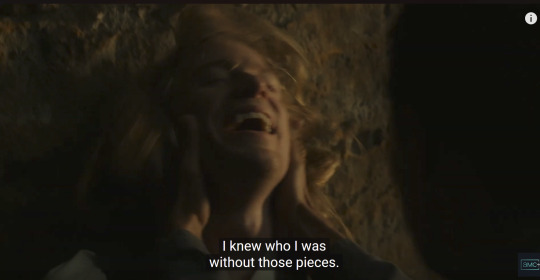
"Who are you, Louis? If there was no ME, if there was no HIM." So yes, the fan theory that Louis WANTS those pieces gone are correct. Or rather--Louis THOUGHT that having those pieces removed would help him. He thought he could recover the lost parts of himself if he wiped his mind of the painful memories. But something must've triggered him--likely finding Claudia's diaries after the 1970s--we are SOOOOO deep in Merrick territory. Cuz Louis wants those memories BACK now--with a vengeance.
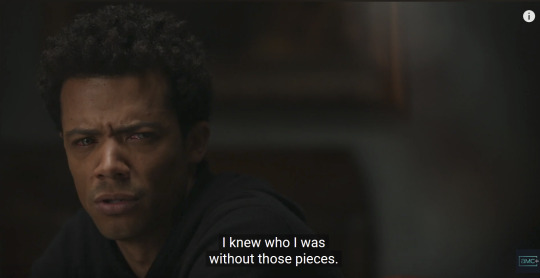
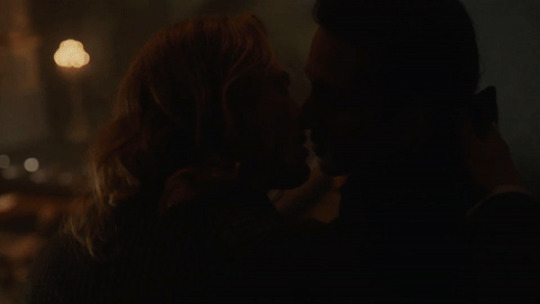
*squints* Are they really GOING THERE with Lesmand!? O_O That's not Nickistat, right? Cuz the very next clip is Armand--using telekinesis on Louis (or Daniel?) WTF?!

And then we see the familiar clip of Armand using the Fire Gift when he first meets Louis. Just paralleling how much Armand openly flaunts his many gifts in front of Louis, while Lestat tried to hide everything he could do to not scare Louis away--until Ep5 ofc.
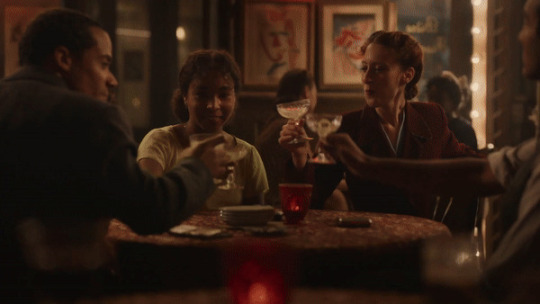
Doomed "happy" "family." YELLOW DRESS ALERT ☝️. The calm b4 ish hits the fan. They immediately cut to Claudia being "welcomed" by the Theatre and Santiago zooming thru the tunnel--
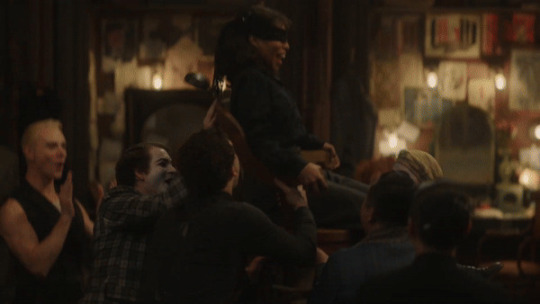

--DEATH to all of them! "F**k these vampires"--Claudia never lied!

Louis, you are just too dang pretty--GTFO off my dang screen. 😍
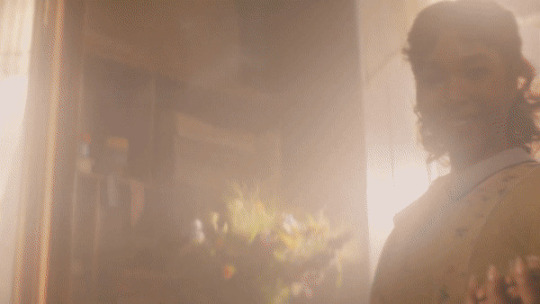
Another YELLOW dress--these images are cursed.

Loustat reunion at the Trial, if that's the same outfit Lestat wore here.

Give him hell, Armand! 😈 He wanted to be the Devil's Minion so bad--here you go! Look at all that glass shattering around him; no wonder Daniel's scared for his life, LOL! (If this is actually Louis throwing a fit I will DIE.)
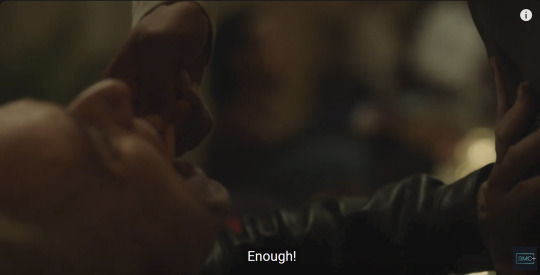
Louis finna GO OFF on this BUFFOON! So THAT'S why Armand was mad! XD Louis (or Claudia?) was about to rip Santiago's whole jaw off! XDDDD

The sound of Louis just crying has me in a STATE. AMC is doing something SO freaking different from the film & the books. Louis is actively trying to make sense of things, as we see this poor man just suffering with PTSD and mental illness; with no one to HELP him but some crotchety old man who borderline hates him, and an old AF vampire who'd loves him so much that he'd rather have Louis forget everything cuz ignorance is bliss. 😩

Louis WANTS to remember everything. Armand does NOT want the interview. And Daniel is scared.
Holy freaking goodness, what an incredible trailer. 👏 May 12th can't get here fast enough!
#interview with the vampire#loustat#loumand#louis de pointe du lac#louis de pointe du black#justice for claudia#must see tv#the hype is real
62 notes
·
View notes
Text
[Lei s’innamorò come s’ innamorano sempre le donne intelligenti:
come un’ idiota]
La zia Daniela s’innamorò come s’innamorano sempre le donne intelligenti: come un’idiota. Lo aveva visto arrivare un mattino, le spalle erette e il passo sereno, e aveva pensato: «Quest’uomo si crede Dio». Ma dopo averlo sentito raccontare storie di mondi lontani e di passioni sconosciute, si innamorò di lui e delle sue braccia come se non parlasse latino sin da bambina, non avesse studiato logica e non avesse sorpreso mezza città imitando i giochi poetici di Góngora e di suor Juana Inés de la Cruz come chi risponde ad una filastrocca durante la ricreazione. Era tanto colta che nessun uomo voleva mettersi con lei, per quanto avesse occhi di miele e labbra di rugiada, per quanto il suo corpo solleticasse l’immaginazione risvegliando il desiderio di vederlo nudo, per quanto fosse bella come la Madonna del Rosario. Gli uomini avevano paura di amarla, perché c’era qualcosa nella sua intelligenza che suggeriva sempre un disprezzo per il sesso opposto e le sue ricchezze.
Ma quell’uomo che nulla sapeva di lei e dei suoi libri le si accostò come a chiunque altra. Allora la zia Daniela lo dotò di un’intelligenza abbagliante, una virtù angelica e un talento d’artista. Il suo cervello lo guardò in tanti modi che in capo a dodici giorni credette di conoscere cento uomini.
Lo amò convinta che Dio possa aggirarsi tra i mortali, abbandonata con tutta se stessa ai desideri e alle stramberie di un uomo che non aveva mai avuto intenzione di rimanere e non aveva mai capito neppure uno di tutti i poemi che Daniela aveva voluto leggergli per spiegare il suo amore.
Un giorno così com’era venuto, se ne andò senza neppure salutare. Non ci fu allora in tutta l’intelligenza della zia Daniela una sola scintilla in grado di spiegarle ciò che era successo.
Ipnotizzata da un dolore senza nome né destino, diventò la più stupide delle stupide. Perderlo fu un dolore lungo come l’insonnia, una vecchiaia di secoli, l’inferno.
Per pochi giorni di luce, per un indizio, per gli occhi d’acciaio e di supplica che le aveva prestato una notte, la zia Daniela sotterrò la voglia di vivere e cominciò a perdere lo splendore della pelle, la forza delle gambe, l’intensità della fronte e delle viscere.
Nel giro di tre mesi divenne quasi cieca, le crebbe una gobba sulla schiena e dovette succedere qualcosa anche al suo termostato interno, perché, nonostante indossasse anche in pieno sole calze e cappotto, batteva i denti dal freddo come se vivesse al centro stesso dell’inverno. La portavano fuori a prendere aria come un canarino. Le mettevano accanto frutta e biscotti da becchettare, ma sua madre si portava via il piatto intatto mentre Daniela rimaneva muta, nonostante gli sforzi che tutti facevano per distrarla.
All’inizio la invitavano in strada, per vedere se, guardando i colombi e osservando la gente che andava e veniva, qualcosa in lei cominciasse a dare segni di attaccamento alla vita. Provarono di tutto. Sua madre se la portò in Spagna e le fece girare tutti i locali sivigliani di flamenco senza ottenere da lei nulla più di una lacrima, una sera in cui il cantante era allegro. La mattina seguente inviò un telegramma a suo marito:«Comincia a migliorare, ha pianto un secondo». Era diventata come un arbusto secco, andava dove la portavano e appena poteva si lasciava cadere sul letto come se avesse lavorato ventiquattr’ore di seguito in una piantagione di cotone. Alla fine non ebbe più forze che per gettarsi su una sedia a dire a sua madre:«Ti prego, andiamocene a casa».
Quando tornarono, la zia Daniela camminava a stento, e da allora non volle più alzarsi dal letto. Non voleva neppure lavarsi, né pettinarsi, né fare pipì. Un mattino non riuscì neppure ad aprire gli occhi.
«E’ morta!», sentì esclamare intorno a sé, e non trovò la forza di negarlo.
Qualcuno suggerì a sua madre che un tale comportamento fosse un ricatto, un modo di vendicarsi degli altri, una posa da bambina viziata che, se di colpo avesse perso la tranquillità di una casa sua e la pappa pronta, si sarebbe data da fare per guarire da un giorno all’altro. Sua madre fece lo sforzo di crederci e seguì il consiglio di abbandonarla sul portone della cattedrale. La lasciarono lì una notte con la speranza di vederla tornare, affamata e furiosa, com’era stata un tempo. La terza notte la raccolsero dal portone e la portarono in ospedale tra le lacrime di tutta la famiglia.
All’ospedale andò a farle visita la sua amica Elidé, una giovane dalla pelle luminosa che parlava senza posa e che sosteneva di saper curare il mal d’amore. Chiese che le permettessero di prendersi cura dell’anima e dello stomaco di quella naufraga. Era una creatura allegra e attiva. Ascoltarono il suo parere. Secondo lei, l’errore nella cura della sua intelligente amica consisteva nel consiglio di dimenticare. Dimenticare era una cosa impossibile. Quel che bisognava fare era imbrigliare i suoi ricordi perché non la uccidessero, perché la obbligassero a continuare a vivere.
I genitori ascoltarono la ragazza con la stessa indifferenza che ormai suscitava in loro qualsiasi tentativo di curare la figlia. Davano per scontato che non sarebbe servito a nulla, ma autorizzarono il tentativo come se non avessero ancora perso la speranza, che ormai avevano perso.
Le misero a dormire nella stessa stanza. Passando davanti a quella porta, in qualsiasi momento, si udiva l’infaticabile voce di Elidé parlare dell’argomento con la stessa ostinazione con la quale un medico veglia un moribondo. Non stava zitta un minuto. Non le dava tregua. Un giorno dopo l’altro, una settimana dopo l’altra.
«Come hai detto che erano le sue mani?», chiedeva.
Se la zia Daniela non rispondeva, Elidé l’attaccava su un altro fronte.
«Aveva gli occhi verdi? Castani? Grandi?».
«Piccoli», rispose la zia Daniela, aprendo bocca per la prima volta dopo un mese.
«Piccoli e torbidi?», domandò Elidé.
«Piccoli e fieri», rispose la zia Daniela, e ricadde nel suo mutismo per un altro mese.
«Era sicuramente del Leone. Sono così, i Leoni», diceva la sua amica tirando fuori un libro sui segni zodiacali. Le leggeva tutte le nefandezze che un Leone può commettere. «E poi sono bugiardi. Ma tu non devi lasciarti andare, sei un Toro: sono forti le donne del Toro».
«Di bugie sì che ne ha dette», le rispose Daniela una sera.
«Quali? Non te ne scordare! Perché il mondo non è tanto grande da non incontrarlo mai più, e allora gli ricorderai le sue parole: una per una, quelle che ti ha detto e quelle che ha fatto dire a te».
«Non voglio umiliarmi».
«Sarai tu a umiliare lui. Sarebbe troppo facile, seminare parole e poi filarsela».
«Le sue parole mi hanno illuminata!», lo difese la zia Daniela.
«Si vede, come ti hanno illuminata!», diceva la sua amica, arrivate a questo punto.
Dopo tre mesi ininterrotti di parole la fece mangiare come Dio comanda. Non si rese neppure conto di come fosse successo. L’aveva portata a fare una passeggiata in giardino. Teneva sottobraccio una cesta con frutta, pane, burro, formaggio e tè. Stese una tovaglia sull’erba, tirò fuori la roba e continuò a parlare mettendosi a mangiare senza offrirle nulla.
«Gli piaceva l’uva», disse l’ammalata.
«Capisco che ti manchi».
«Sì» disse la zia Daniela, portandosi alla bocca un grappolo d’uva. «Baciava divinamente. E aveva la pelle morbida, sulla schiena e sulla pancia».
«E com’era… sai di che cosa parlo», disse l’amica, come se avesse sempre saputo che cosa la torturava.
«Non te lo dico», rispose Daniela ridendo per la prima volta dopo mesi. Mangiò poi pane e burro, formaggio e tè.
«Bello?», chiese Elidé.
«Sì», rispose l’ammalata, ricominciando a essere se stessa.
Una sera scesero a cena. La zia Daniela indossava un vestito nuovo e aveva i capelli lucidi e puliti, finalmente liberi dalla treccia polverosa che non si era pettinata per tanto tempo.
Venti giorni più tardi, le due ragazze avevano ripassato tutti i ricordi da cima a fondo, fino a renderli banali. Tutto ciò che la zia Daniela aveva cercato di dimenticare, sforzandosi di non pensarci, a furia di ripeterlo divenne per lei indegno di ricordo. Castigò il suo buon senso sentendosi raccontare una dopo l’altra le centoventimila sciocchezze che l’avevano resa felice e disgraziata.
«Ormai non desidero più neppure vendicarmi», disse un mattino a Elidé. «Sono stufa marcia di questa storia».
«Come? Non mi ridiventare intelligente, adesso», disse Elidé. «Questa è sempre stata una questione di ragione offuscata: non vorrai trasformarla in qualcosa di lucido? Non sprecarla, ci manca la parte migliore: dobbiamo ancora andare a cercare quell’uomo in Europa e in Africa, in Sudamerica e in India, dobbiamo trovarlo e fare un baccano tale da giustificare i nostri viaggi. Dobbiamo ancora visitare la Galleria Pitti, vedere Firenze, innamorarci a Venezia, gettare una moneta nella Fontana di Trevi. Non vogliamo inseguire quell’uomo che ti ha fatto innamorare come un’imbecille e poi se n’è andato?».
Avevamo progettato di girare il mondo in cerca del colpevole, e questa storia che la vendetta non fosse più imprescindibile nella cura della sua amica era stata un brutto colpo per Elidé. Dovevano perdersi per l’India e il Marocco, la Bolivia e il Congo, Vienna e soprattutto l’Italia. Non aveva mai pensato di trasformarla in un essere razionale dopo averla vista paralizzata e quasi pazza quattro mesi prima.
«Dobbiamo andare a cercarlo. Non mi diventare intelligente prima del tempo», le diceva.
«E’ arrivato ieri», le rispose la zia Daniela un giorno.
«Come lo sai?»
«L’ho visto. Ha bussato al mio balcone come una volta».
«E che cosa hai provato?»
«Niente».
«E che cosa ti ha detto?»
«Tutto».
«E che cosa gli hai risposto?»
«Ho chiuso la finestra».
«E adesso?», domandò la terapista.
«Gli assenti si sbagliano sempre».
Ángeles Mastretta
[racconto tratto dal libro “Donne dagli occhi grandi”]
*traduzione di Gina Maneri
81 notes
·
View notes
Text
Jewish Song of the Day #31: Avram Avinu
youtube
Comments:
Posting this song today because I can't get it out of my head, it's too catchy, I've been listening to it on repeat
Question for any Sephardi folks: is this a really "big" song in Sephardi nusach? Because when I went looking for Ladino songs, I kept finding version after version of this one song lol.
Here is another excellent version (although it uses an alternate name it's the same song as far as I can tell) and has an excellent explanation in the description:
youtube
Vocals & arrangement by Farya Faraji. This is a song from the Sephardi music repertoire; the Jewish community that was expelled from Iberia at the end of the Reconquista, and settled around the Mediterranean, developping diverse regional styles based on where they settled.
This specific song is from Tangiers, Morocco, and was written by an anonymous author in 1890. Different songs using this text, or similar ones detailing the birth of Abraham have existed during the centuries, but this one in Maqam Hijaz is the most well known one.
My arrangement pays homage to the Moroccan-Spanish background of the song by mixing a Moroccan string section, percussions and oud with a Spanish guitar chord progression similar to Flamenco’s.
Lyrics in Ladino:
Kuando el rei Nimrod al kampo salia
mirava en el sielo i en la estreyeria
vido una lus santa en la juderia
Ke avia de naser Avraham Avinu.
Chorus:
Avraham Avinu, Padre kerido
Padre bendicho, lus de Israel.
Luego a las komadres enkomendava
Ke toda mujer ke prenyada kedara
si paria un ijo, al punto la matara
Ke avia de naser Avraham Avinu.
La mujer de Terah kedo prenyada
i de dia en dia el le preguntava (or demandava)
"¿De ke teneix la kara tan demudada?"
Eya ya savia el bien ke tenia.
En fin de mueve mezes parir keria
iva caminando por kampos i vinyas,
a su marido tal ni le descubria
topo una meara, ayi lo pariria
En akella ora el nasido avlava:
"Anda vos, la mi madre, de la meara,
yo ya topo kien m'alechara,
Malah de sielo me acompanyara.
Grande zekhut tiene el senyor Avraham,
que por él conocemos el Dío de la verdad.
Grande zekhut tiene el senyor parido,
que afirma la mitsvá de Avraham Avinu.
English translation:
When King Nimrod went out to the countryside
He was looking at heaven and at the stars
He saw a holy light in the Jewish quarter
[A sign] that Abraham, our father, was about to be born.
Chorus:
Abraham our Father, beloved father,
Blessed father, light of Israel.
Then he told the midwives
That every woman who was still pregnant
If she gave birth to a male child at once he will be killed
because Abraham our father was about to be born.
Terach's wife was pregnant
and each day he would ask her
"Why do you look so pale?"
She already knew the blessing that she had.
At the end of nine months she wanted to give birth,
She walked through fields and vineyards
She didn't tell her husband anything,
She found a cave; there, she would give birth.
At that time the newborn spoke:
"Walk away from the cave, my mother
I have already found someone who will take me away.
An angel from heaven will accompany me
Because I am a child of the blessed God."
After twenty days she went to visit him.
She saw in front of her a young man leaping,
Looking at the sky and (looking carefully/noticing everything),
In order to know the God of Truth.
Great merit has honorable Abraham
Because of him we recognize the true God.
Great merit has the father of the newborn
Who fulfills the commandment of Abraham our father (circumcision).
58 notes
·
View notes
Text

Séville, la ville où tradition et modernité se marient harmonieusement et où la joie est contagieuse à chaque coin de rue.

Belle Séville : une ville abritant des orangers vibrants, de délicieuses tapas et les sons des danseurs de flamenco
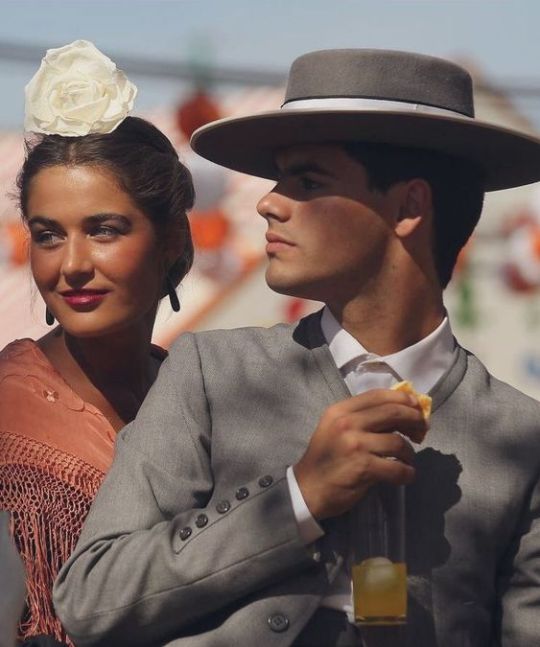

35 notes
·
View notes
Text
DANCE IN HORROR
In different cultures dance and music was (and still is) appropriate way to negotiate with gods. Music and dances have been a part of religious festivals, births, deaths, marriage ceremonies, and other festivities. Midsommar (2019).
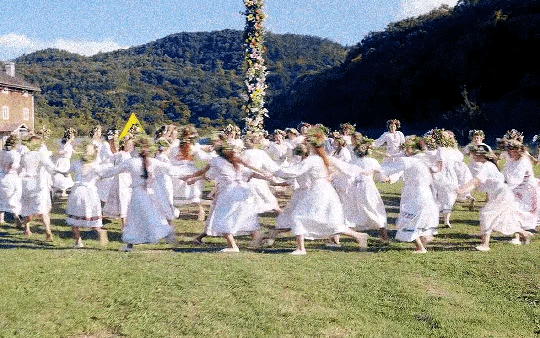
Ritual dances can be performed individually or collectively, in traditional dresses, along with their own songs. Wicker Man (1973.)

Trance, on the other hand, was often the prerogative of holy men. The Believers (1987).
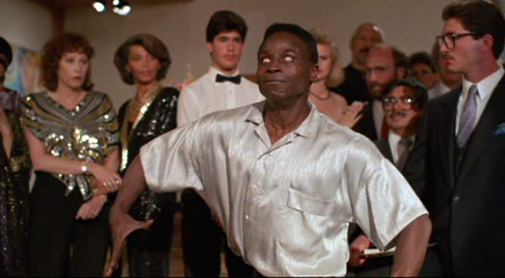
God’s death and rebirth are also associated with fertility rituals such as maypole dance. Ritual is used to eliminate things that threaten the world order, such as sickness, the order is restored. Angel Heart (1987).

In Europe the development of art dance began to form first in ballet. The ballet was initially a very well-defined series of movements. It took a long time before the art dance could be expressing an idea or emotion, releasing energy, or simply taking delight in the movement itself. Red Shoes (1948).
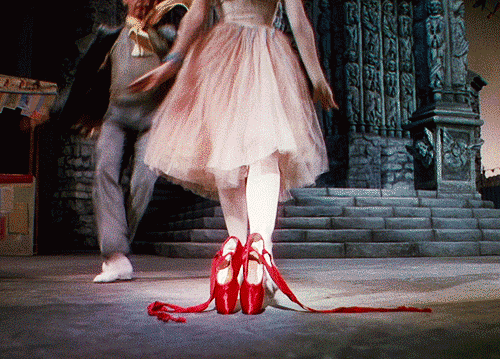
In the early days of Western art dance, ballet was disciplined and regulated and left very little room for self-expression. It was not until the turn of the 20th century that modern art dance took its first steps. Isadora Duncan danced barefoot, she was interested in Greek antiquity - for example The Furies. Suspiria (1977).

Before The World War II, modern dance was influenced by Mary Wigman and Rudolf Laban in particular. "Ausdruckstanz" meant that the primary function of dance was to give shape to emotions and inner experiences. The expression of personal feelings in dance was banned along with psychoanalysis and many dancers and psychoanalysts fled from Germany to America. Wigman and Pina Bausch have been mentioned as a model for the Madame Blanc in Suspiria (2018).

Mirroring & Reflecting are important in dance & Psychotherapy. In French, “être Médusé” means literally to be paralysed by stupefaction. Les médusées-group was a model for the Suspiria (2018).
youtube
It may be that the superego problem is also reflected in the body. Our bodies are like bound by curses. The madness, the melting superego, was seen in the Climax (2018).
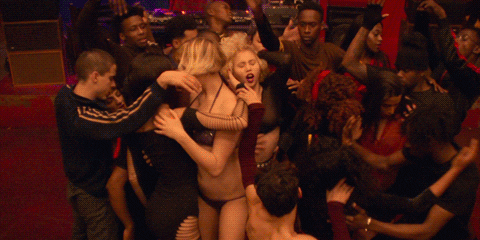
Modern dance diversified in the 1980s. Non-European influences began to show more clearly. Dancing is increasingly being done in public places, not just in a dance theater. The content of the dance is important, not just distinctiveness. However, classics - like the Swan Lake ballet - have remained popular with the general public. (Haukinen et al. 1992.) Black Swan (2010).

The Witches (1966): Beneath everything controlled lies the primitive power of libido and aggression that threatens the order. Dancing is also a way to get to know different cultures. Flamenco, Latin dances, etc. For many, dance is an exercise and a way to take care of their health.

Listen more🎙🎧 18<
youtube
#dance#dancing#ballet#modern dance#pina bausch#threemotherstrilogy#dario argento#wicker man#midsommar#italian horror#movies#witch#witchcraft#witches#horror film#folklore#psychoanalysis#history#film#folk horror#uncanny#colonialism#psychology#cinema#horror#witchyvibes#witches sabbath#podcast#ritual#shamanism
419 notes
·
View notes
Text
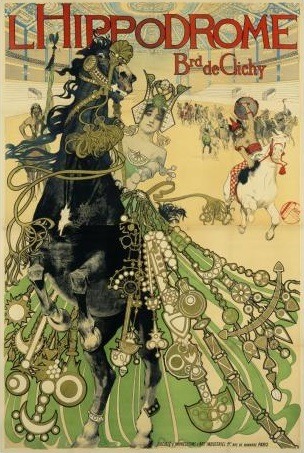




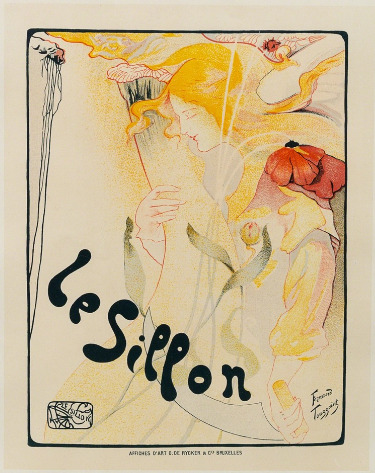
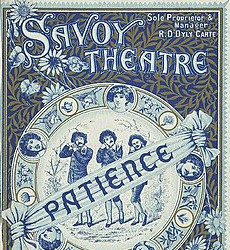


STFD Vintage Poster/Ad Art
1- L'HIPPODROME by Manuel Orazi, 1905 (Lillian's office)
2- In Agra (cover art for 'Asia' Magazine) by Frank McIntosh, 1930 (Lillian's office)
3- Lidia by Jules Cheret, 1895 (Lillian's office)
4- Job Paper Cigarettes by Jules Chéret, 1896 (Lillian's office)*
5- Flamenco Dancer by Henry J. Soulen, c.1930 (Lillian's office)**
6- Le Sillon by Fernand Toussaint, 1895 (Lillian's office)
7- Original Program for Gilbert and Sullivan's Patience by Clement-Smith & Co., 1882 (Prop room)
8- The Empire Theatre Program by George Barbier, 1928 (Mattie's dressing room)
9- Le Mage by Alfredo Edel, 1891 (Prop room)
*HeR changed the text on the in-game artwork - can't have an ad for cigarettes in a game for youths after all. 'Fete des menteurs' roughly translates to 'Liars' Ball'

**this is one of those irritating cases where the only source I can track down is the Mary Evans/Pictures Now image collection. Soulen's signature is visible on the piece - here it is side-by-side with an illustration he did for the Saturday Evening Post in 1932.


130 notes
·
View notes
Text
youtube
¿QUIÉN FUE PACO DE LUCÍA?
Fue un compositor y guitarrista español de flamenco.
Hermano menor de la dinastía de «Los Lucía», junto a Ramón de Algeciras y Pepe de Lucía, recibió como estos educación musical de la mano de su padre, Antonio Sánchez Pecino, también guitarrista. En un ambiente familiar muy cercano al mundo flamenco, Paco de Lucía pronto tomó contacto con algunas de las principales figuras del mundo flamenco, siendo una de sus principales influencias el Niño Ricardo y Sabicas. Tras darse a conocer al mundo flamenco español en el Concurso Internacional de Arte Flamenco de Jerez de la Frontera de 1962, grabó sus primeros discos junto a su hermano Pepe formando parte del conjunto Los Chiquitos de Algeciras. En los años siguientes colaboró al toque con los cantaores Fosforito y El Lebrijano y desde 1969 con Camarón de la Isla.
A partir de la publicación de Fuente y caudal en 1973, su música llegó al público mayoritario. Con el paso de los años su música fue progresivamente abriéndose a nuevos estilos al tiempo que comenzaba a interpretarse en ámbitos más alejados de los tradicionales tablaos españoles y latinoamericanos. Actuó con éxito en Europa, Norteamérica y Japón, ocupando estas giras la mayor parte de su tiempo.
Considerado una de las principales figuras del flamenco actual, se le atribuye la responsabilidad de la reforma que llevó este arte a la escena musical internacional gracias a la inclusión de nuevos ritmos desde el jazz, la bossa nova y la música clásica. De este modo destacan sus colaboraciones con artistas internacionales como Carlos Santana, Al Di Meola o John McLaughlin, pero también con otras figuras del flamenco como Camarón de la Isla o Tomatito, con quienes modernizó el concepto de flamenco clásico. A lo largo de su carrera grabó un total de 38 discos, incluyendo cinco antologías y cinco discos en directo, además de numerosas colaboraciones al toque de cantaores e intérpretes de numerosos estilos musicales.
Recibió, entre otros muchos galardones, dos premios Grammy latinos por sus álbumes Cositas buenas (2004) y En vivo Conciertos España (2010), el Premio Nacional de Guitarra de Arte Flamenco, la Medalla de Oro al Mérito en las Bellas Artes (1992), Hijo predilecto de la provincia de Cádiz (1997), Hijo predilecto de Algeciras (1998), la Medalla de Plata de Andalucía, la Distinción Honorífica de los Premios de la Música (2002), el Premio Príncipe de Asturias de las Artes (2004), Doctor Honoris Causa por la Universidad de Cádiz (2009) y por el Berklee College of Music (2010).

21 notes
·
View notes
Text
¿CONOCIAS LA HISTORIA DE “LA CAOBA”? EL ESCÁNDALO DE LA DICTADURA DE PRIMO DE RIVERA
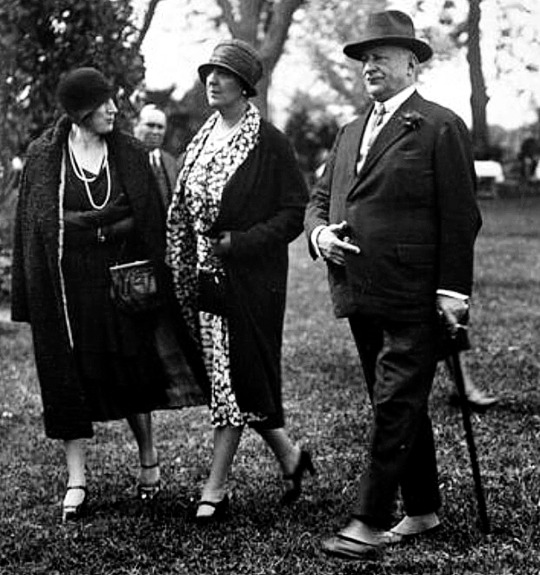

Al comienzo de los años 20 del siglo XX, (1924) la cocaína y la morfina eran de consumo habitual en cabarets y locales nocturnos de ciudades como Madrid, Barcelona, Valencia. Francia parecía ejercer una perniciosa influencia sobre nuestras fronteras. Se temía un contagio de una modernidad sobre la que poco se sabía realmente.
Sexo y droga, una combinación difícil de superar, ni siquiera para el dictador Miguel Primo de Rivera que no supo librarse de sus embrujos y fue capaz de destituir a un juez que detuvo a su amante favorita, una prostituta andaluza conocida como La “Caoba” que además mercadeaba con la cocaína.
La “Caoba” frecuentaba el tablao flamenco, Villa Rosa, que nació de la mano de dos banderilleros y un picador como freiduría de” pescaito” y finos, entre la calle Gorguera y el callejón Álvarez Gato en 1911, y que en 1924 contaba con buenos cantaores como Antonio Chacón. En los reservados del Villa Rosa solían perderse la elite política, militar, burgueses y el rey Alfonso XIII.
Pero el protagonista del escándalo fue el general Miguel Primo de Rivera, que sirvió en Marruecos, Cuba y Filipinas, estuvo seis años casado y tuvo seis hijos, su esposa Casilda Saenz de Heredia murió precisamente de parto. En su viudez, el general se convirtió en asiduo de casas de juego,cabarés, music halls, se rodeó de numerosas amantes como la cupletista Raquel Meller, prostitutas, sobre todo, de la ya nombrada, la “Caoba” que fue detenida y procesada por tráfico de drogas y chantaje a un empresario.
Fue procesada por el juez, don José Prendes Pando. Es entonces cuando el dictador Primo de Rivera indica al magistrado que deje libre a su amante, aduciendo que él era protector de jóvenes alegres. No cejó hasta que el juez fue enviado a Albacete, expulsado de la carrera judicial y el presidente del Tribunal Supremo, don Buenaventura Muñoz, que respaldó al magistrado, fue jubilado anticipadamente.
Hubo quien se atrevió a criticar abiertamente al dictador, como El Colegio de Abogados de Madrid, quien en junta general alzaron sus voces enérgicas y condenaron la intromisión del Dictador, emitiendo una nota de protesta. También se criticó en los círculos intelectuales alrededor del Ateneo de Madrid. Así lo hicieron su presidente, don Rodrigo Soriano y un miembro tan destacado como don Miguel de Unamuno, entonces vicerrector de la Universidad de Salamanca.
La “Caoba” salió de la cárcel y a ambos ateneístas la crítica les costó el destierro a Fuerteventura. Dicen que la última frase del catedrático en su clase de la Universidad de Salamanca fue: “Para el día próximo, lección siguiente”. El Ateneo fue clausurado.
El Heraldo de Madrid, habló tambien sobre el tema, pero para evitar represalias contó que el suceso se había producido en Bulgaria y el protagonista era el primer ministro de este país.
Unamuno al año del exilio publicó De Fuerteventura a París. Diario íntimo de confinamiento y destierro vertido en sonetos por Unamuno, una colección de textos y referencias a una España que se le negaba. También habló de La Caoba :
«Famoso se hizo el caso de la ramera, vendedora de drogas prohibidas por la ley y conocida por La Caoba, a la que un juez de Madrid hizo detener para registrar su casa y el Dictador le obligó a que la soltase y renunciara a procesarla por salir fiador de ella.
Cuando el caso se hizo público y el Rey, según parece, le llamó sobre ello la atención, se le revolvió la ingénita botaratería, perdió los estribos — no la cabeza, que no la tiene — y procedió contra el juez tratando de defenderse en unas notas en que se declaraba protector de las jóvenes alegres.
Aquellas notas han sido uno de los baldones más bochornosos que se han echado sobre España, a la que el Dictador ha tratado como a otra ramera de las que ha conocido en los burdeles. Se ha complacido en mostrar sus vergüenzas y en sobárselas delante de ella«.
29 notes
·
View notes
Text
Annulation du Festival Flamenco de Perpignan 2022
Annulation du Festival Flamenco de Perpignan 2022
C’est le cœur lourd que nous vous annonçons aujourd’hui l’annulation de l’édition 2022 du Festival Flamenco de Perpignan qui devait se tenir du 15 au 20 août 2022. Après deux ans de Covid et un changement de lieu, force est de constater que le public ne répond plus à l’appel et les inscriptions ne sont à ce jour pas suffisantes.
Les organisateurs souhaitent remercier de tout cœur les personnes…
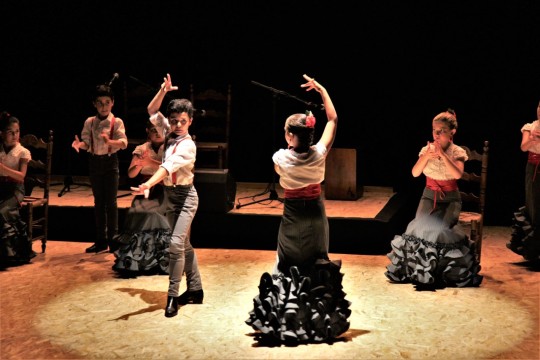
View On WordPress
#2022#Amor Flamenco#André Bonnet#Carlos Lafabrègue#Denis Saez#festival#Le Journal Catalan#perpignan#Pyrénées-Orientales#Véronique Lopez
0 notes
Text
punch out boxers and what they would dress up as at a costume party
Sorry for the non-jolly posts but i simply have to do this
Glass joe - the "i am le tired" dude from that one vid i cant remember or a baguette
Von Kaiser - He would dress up as a tank and rock it or go as a robot
Disco Kid - what can i say?? A Disco ball since he lights up any room he walks in (both literally and figuratively now)
King Hippo - a king, And a Hippo (im running out of ideas send help)
Piston Hondo - sailor moon, hes very devoted to the anime, he literally reads manga in the corner during a match
Bear Hugger - the lorax or a maple tree, either way hes a hugger not a fighter
Great Tiger - He would be a fortune teller and give everyone ominous readings like "stay away from those red stairs"
Don Flamenco - he would dress up as a flamingo for a dare, he would match with carmen too
Aran Ryan - a leprechaun, do i need to say more?
Soda Popinski - He would just wear a entire ass fridge and strut his shit
Bald Bull - WARIO!! this man was meant for a wario cosplay or a maid outfit with cow ears if you wanna go that route
Super Macho Man - a doritos bag, specifically nacho flavored or the sentient pizza from uncle grandpa
Mr Sandman - a hourglass or a mummy, Just something related to sand because he has sand in his name for a reason
#punch out#headcanon#punch out headcanons#punch out wii#aran ryan#bald bull#don flamenco#piston hondo#glass joe#great tiger
23 notes
·
View notes
Text
Taurino, muy de derechas, le gusta Jerez, el flamenco y su ídolo es Jesulín de Ubrique, ¿qué podía salir mal?
9 notes
·
View notes